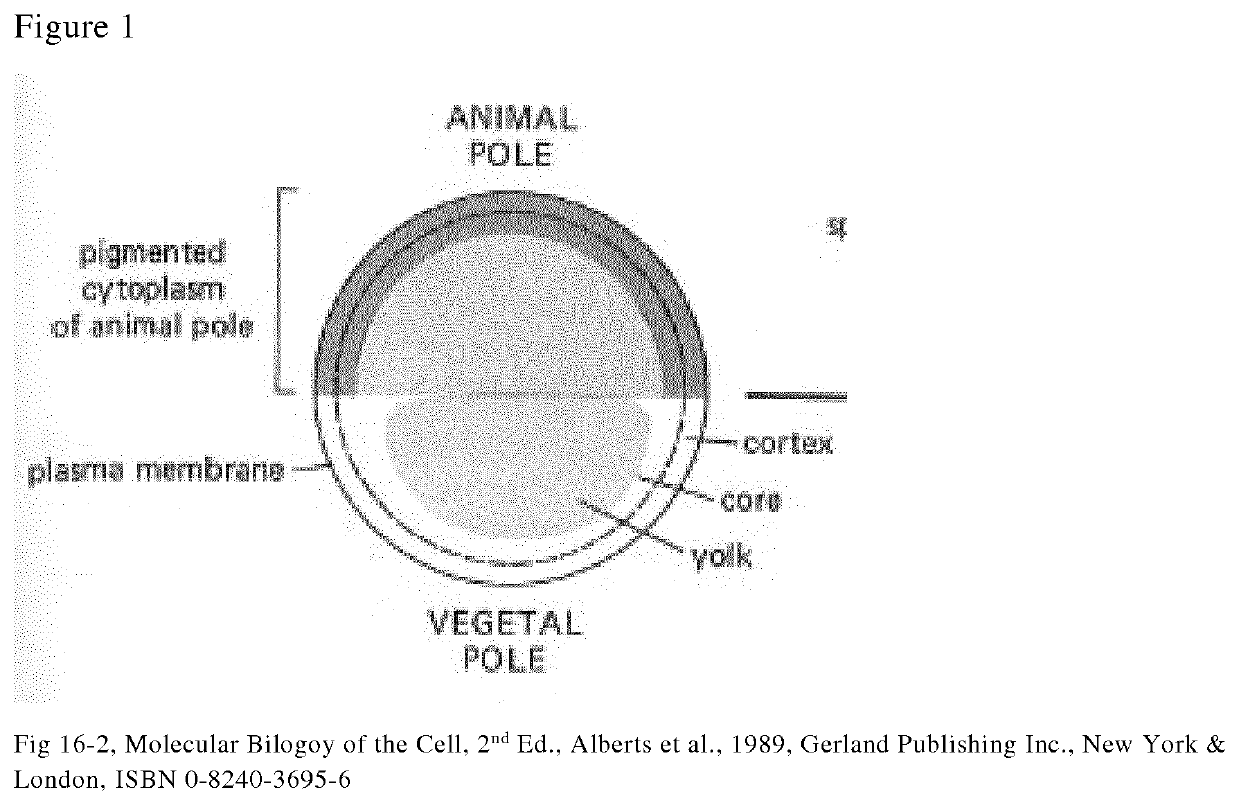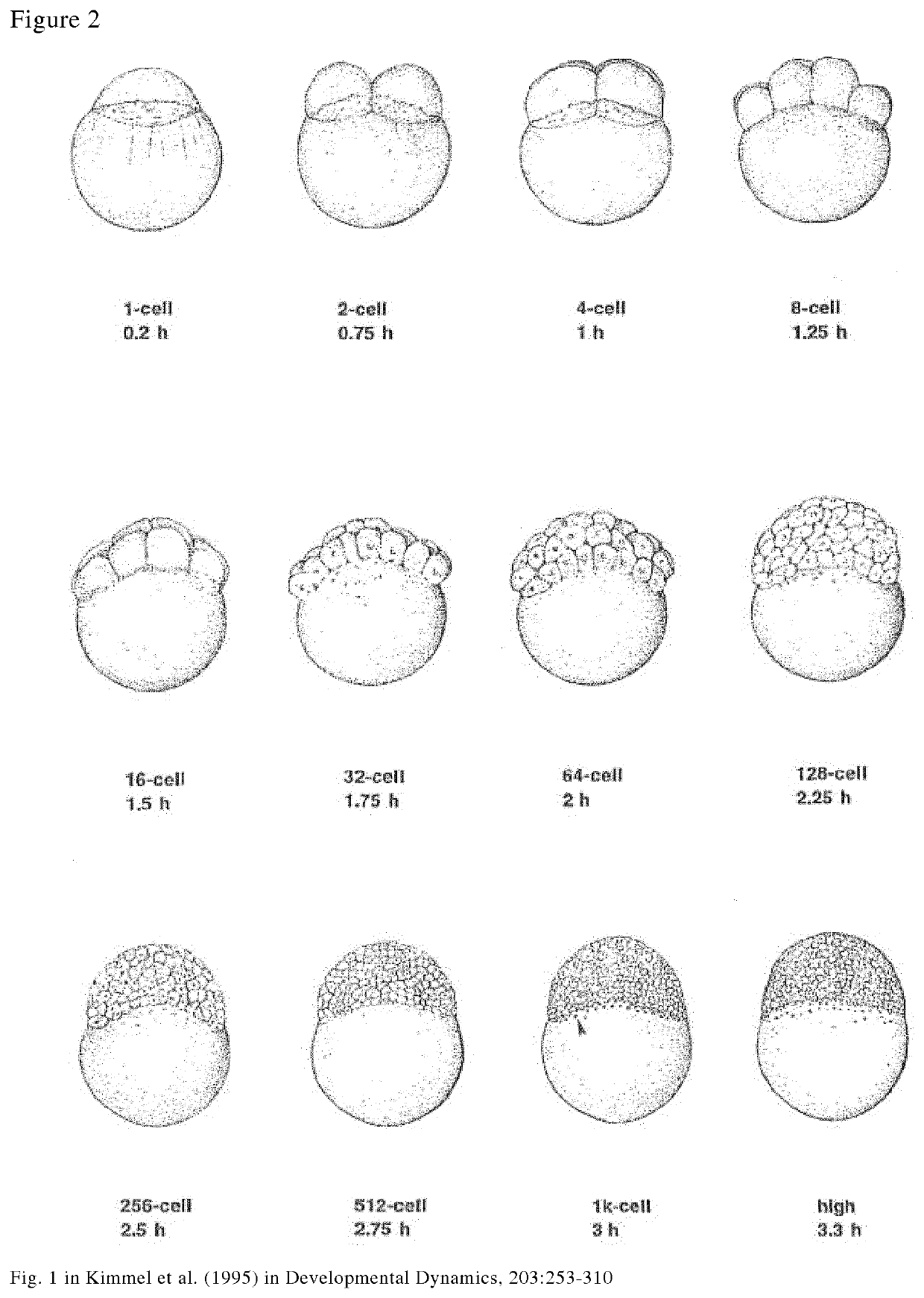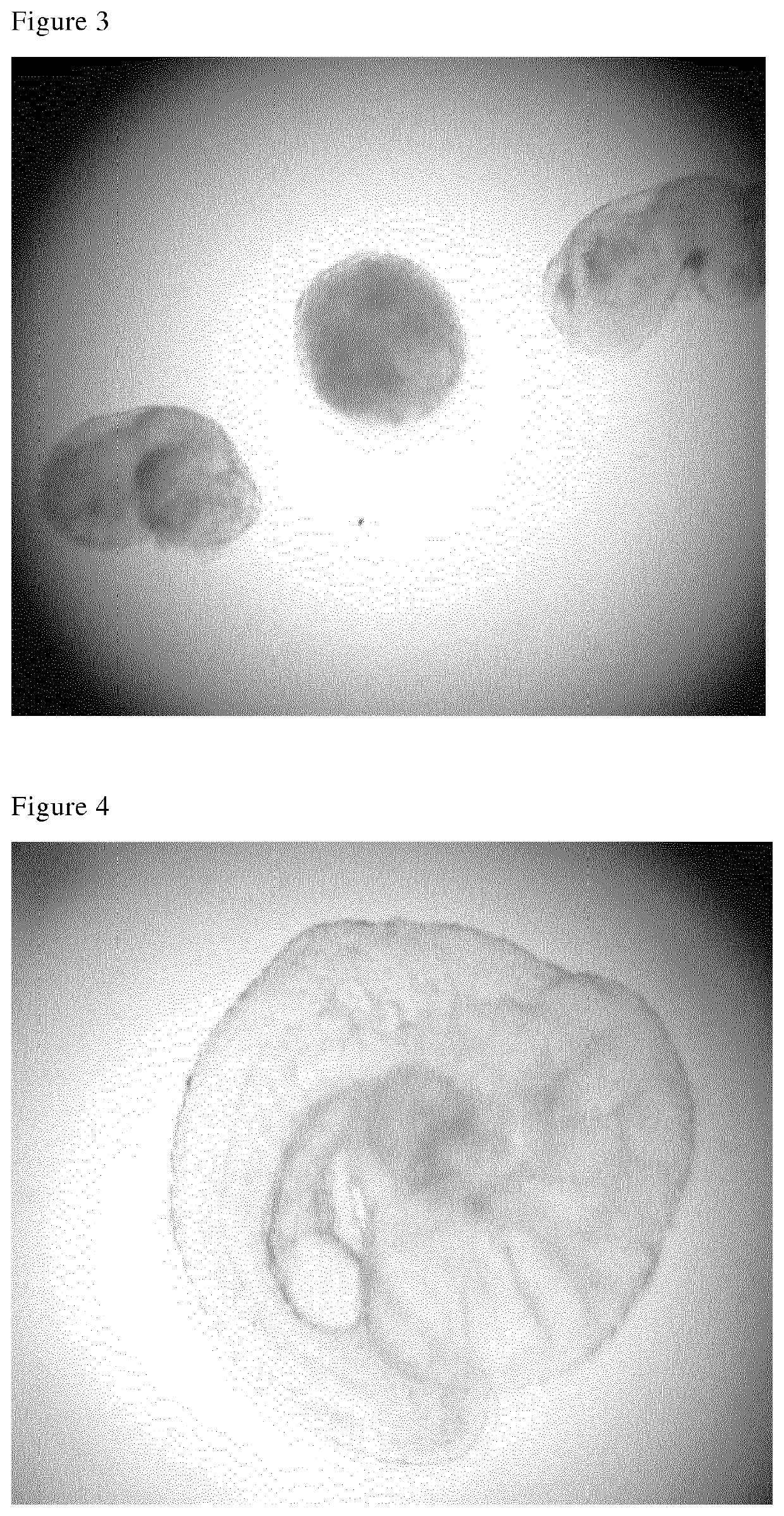Method for removal of yolk
- Summary
- Abstract
- Description
- Claims
- Application Information
AI Technical Summary
Benefits of technology
Problems solved by technology
Method used
Image
Examples
example 1
val and Isolation of Blastoderms
[0111]Embryos used in this experiment are the results of natural breeding. Embryos were collected from fish kept in tanks at the zebrafish facility at the Norwegian Veterinary School, at a temperature of 27.5° C., light:dark cycle 14:10, and fed three times daily with artemia / SDS 400.
[0112]The pronase solution was pre-warmed to 25° C. and the further treatment is performed at RT. A number from −10 to −100 of embryos between the 512-cell to 1K cell stage was treated with 1 mg / ml pronase for 30 minutes in plastic petri dishes at room temperature. The treatment may also be performed at 25° C. in order for the removal of chorion and yolk to be performed more quickly.
[0113]The pronase treated embryos was then washed three times in Hank's Balanced Salt Solution (HBSS) with fetal bovine serum (FBS) to remove and quench the pronase. The isolated blastoderms are kept in HBSS comprising FBS until further use (e.g. transplantation, cryoconservation).
[0114]In FIG...
example 2
tation of Embryo Blastoderm on Donor Yolk
[0116]Zebrafish embryos was exposed to pronase and washed according to the method of example 1. The isolated blastoderm where then transplanted onto a donor yolk according to the method disclosed in Mizuno et al, From Methods in Molecular Biology, Vol 127, Cell and Tissue Transplantation in Zebrafish Embryos (1999) and Yamaha et al, (2001), Germ-line chimera by low-part blastoderm transplantation between diploid goldfish and triploid crucian carp.
[0117]FIG. 7 is a picture of an intact donor embryo (left) and a blastoderm (right) isolated according to the present invention.
[0118]The blastoderm treated according to the present invention attached to the donor yolk short time after transplantation (FIG. 8), and developed normally thereafter, see FIG. 9 showing the transplanted embryo 1-2 hours after transplantation of the blastoderm to the donor yolk.
example 3
val and Isolation of Blastoderms from Carp
[0119]Embryos being the result of natural breeding of carp belonging to the species Puntius conchonius were treated in the same manner as disclosed in example 1.
[0120]As shown in FIG. 10-13, yolk were successfully removed resulting in isolation of blastoderms from Puntius conhonius embryos in the blastula stage.
[0121]The method of example 1 was also applied on naturally breeded embryos of goldfinned barbs (Puntius semifasciolatus) with similar results (data no shown).
PUM
 Login to View More
Login to View More Abstract
Description
Claims
Application Information
 Login to View More
Login to View More - R&D
- Intellectual Property
- Life Sciences
- Materials
- Tech Scout
- Unparalleled Data Quality
- Higher Quality Content
- 60% Fewer Hallucinations
Browse by: Latest US Patents, China's latest patents, Technical Efficacy Thesaurus, Application Domain, Technology Topic, Popular Technical Reports.
© 2025 PatSnap. All rights reserved.Legal|Privacy policy|Modern Slavery Act Transparency Statement|Sitemap|About US| Contact US: help@patsnap.com



